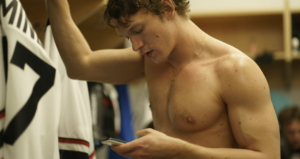A couple of years ago, a personal foray into bottoming brought to light the complex interplay of physical challenge and emotional vulnerability that many gay men face when exploring this particular aspect of intimacy. Two men, both accustomed to topping, decided to push their boundaries in the spirit of mutual exploration and desire. Their initial attempt was marked by discomfort and frustration, underscored by physical pain and emotional strain. The experience was characterized by a series of fits and starts, revealing that preparation and trust are crucial to discovering pleasure in bottoming.
Yet, this early trial did not deter further exploration. Over time, the author began to navigate the world of bottoms with greater confidence and enjoyment, meeting partners like Jeff, who bring not only passion but also tenderness and a willingness to create a safe, caring space. This evolution highlights the importance of patience, sensitivity, and an emotional connection in overcoming initial fears and negative preconceptions associated with bottoming.
Historically, the AIDS crisis has cast a long shadow over anal sex within the gay community, instilling a lingering sense of fear and stigma around bottoming. This cultural backdrop has often framed bottoming as risky or submissive in a way that conflicts with broader perceptions of masculinity. The author’s reflection on feeling “demeaned” by the idea of being on the bottom speaks to these deep-seated attitudes, even when personal desires and fantasies suggest otherwise. This conflicted relationship with sexual roles is echoed in academic research, which shows that bottoming can be understood not as a loss of power but as a complex dynamic that includes both vulnerability and control, challenging traditional notions of masculinity in gay men.
Practical guidance from health and wellness sources adds important dimension to this journey. Anal dilation, mental preparation, and relaxation techniques such as deep breathing are essential to reducing discomfort and cultivating pleasure. Creating a calming environment through rituals—candles, music, warm baths—can transform the experience, while post-sex self-care including hydration and gentle cleaning supports physical wellbeing. Nutrition also plays a vital role, with fibre-rich diets and avoidance of greasy or irritating foods helping maintain comfort. These measures collectively underscore that bottoming is as much about preparation and care as it is about desire and trust.
The landscape of gay sexuality appears to be shifting toward greater fluidity and openness. More men identify as tops or switchers, breaking away from strict role assignments that once defined encounters. Sexual adventurism and clearer communication about preferences and boundaries have become more common, helping to dismantle the stigma around bottoming. The author’s current openness and celebration of all facets of sexual experience reflect a broader cultural movement toward sex-positivity and dismantling shame.
Ultimately, embracing bottoming later in life, as described here, involves unlearning fear, building trust with partners, and honouring personal pleasure without judgment. This journey is both physical and emotional, requiring a readiness to be vulnerable and a willingness to explore beyond ingrained habits. For many in the LGBTQ+ community, it offers a path to deeper connection, empowerment, and joy.
Source: Noah Wire Services




















